What do we mean by harmful substances?
A harmful substance is any substance that causes negative health effects. For the purposes of this lifestyle medicine website, we will limit our discussion to Tobacco, Alcohol and Marijuana.
Why do we care?
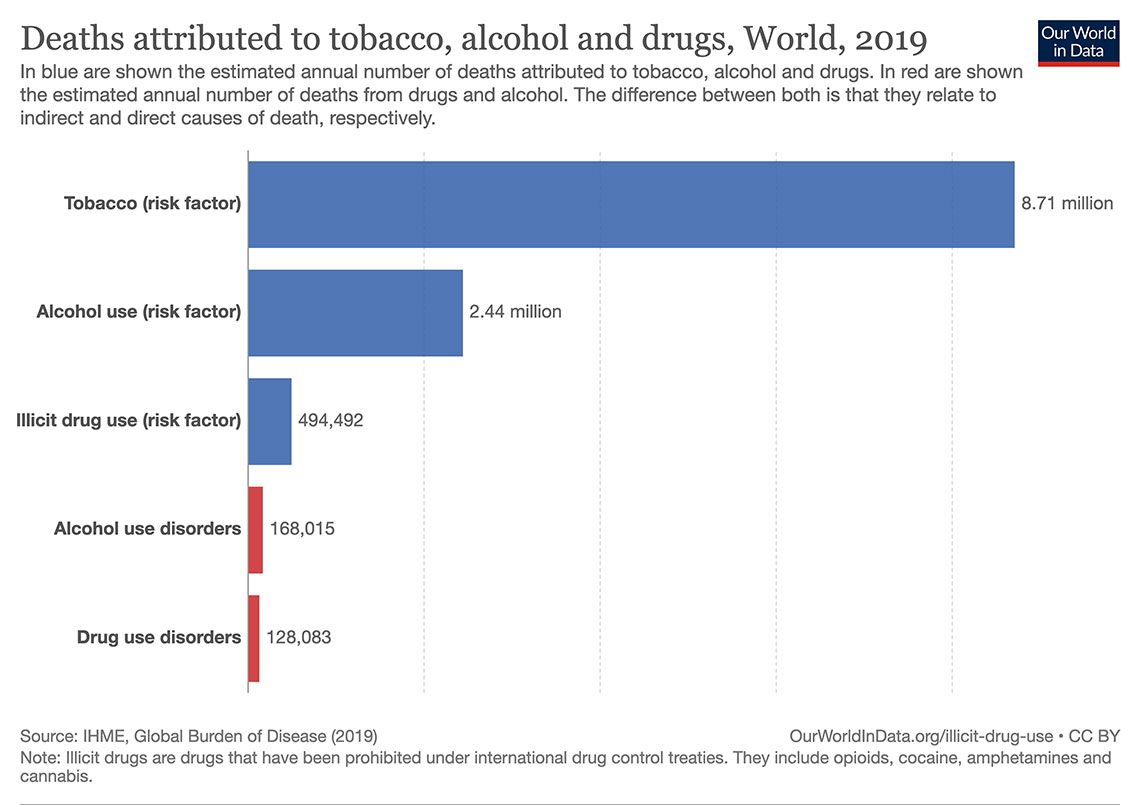
Use of harmful substances, especially the more common ones like tobacco and alcohol, increases the risk of many chronic illnesses and death and many people do not realize that consuming these products endangers their health. Therefore, it is very important to raise awareness of the harmful effects of these substances, and to provide resources to help reduce these adverse outcomes.
Jump to:
Smoking/Tobacco - The leading cause of preventable disease in the US
Prevalence
In 2021, the CDC reported that approximately 12 out of every 100 adults 18 years and older in the US currently smoke cigarettes. While this number has been decreasing over recent years, tobacco use contributes to 1 out of every 5 deaths in the US.
Forms of tobacco
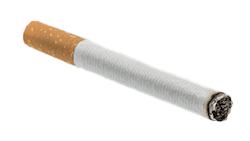
Cigarettes

Cigars

Hookah
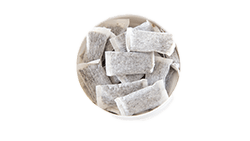
Chew/Snuff
Why do people smoke?
For many people, smoking and other forms of tobacco use starts as a social activity with friends or family. The reason people continue to smoke outside of social settings is because cigarette products contain a substance called nicotine that activates the reward pathway in your brain releasing a hormone known as dopamine that makes you feel good. Because of this release of dopamine and the associated positive feeling, nicotine is highly addictive.
Known Risks
Most people associate smoking with health issues impacting the lungs, but the truth is smoking can impact every single part of your body. Some of the risks associated with smoking are:
- Death & Mortality: Studies show that middle-aged tobacco users have mortality rates that are two to three times higher than never smokers. In smokers, the average life expectancy is about 10 years less than non-smokers.
- Heart Disease: Tobacco worsens cholesterol, increases blood pressure, and increases plaque buildup in heart blood vessels that lead to heart attacks. This is seen more frequently with any amount of tobacco use.
- Stroke: Smoking also can damage the blood vessels in the brain, and increase the risk of stroke. The risk of stroke is more than doubled in smokers, and could be as high as 4 times higher than in non-smokers! increased risk of stroke by 2 to 4 times.
- Respiratory diseases: Tobacco use is commonly linked to diseases including emphysema, bronchitis, and chronic obstructive pulmonary disease (COPD). In smokers, and individuals exposed to second-hand smoke, exacerbations of asthma, COPD, and interstitial lung diseases are more frequent and more severe.
- Cancer: Tobacco increases the risk of cancer anywhere in the body and affects more than the lungs. Tobacco has been linked to cause cancers in the head and neck, tongue, esophagus, stomach, liver, kidneys, and bladder. It is estimated that 1 in 3 cancers diagnosed in the United States are attributable to smoking.
- Pregnancy: Tobacco affects not just pregnant individuals, but also can be detrimental to the fetus and is linked to higher risk of early birth (preterm delivery), stillborn birth, sudden infant death syndrome (SIDS), and dangerous pregnancies called ectopic pregnancies.
Lung Cancer Screening
Everyone who smokes should consider lung cancer screening…
Smoking is the number one risk factor for lung cancer. It is linked to about 80% of lung cancer deaths. The longer someone smokes and the larger the amount they smoke, the greater the risk of developing and succumbing to this disease.
Lung cancer screening is applicable to those who have been deemed as high-risk individuals. It is very similar to breast cancer and colon cancer screening in that it is centered around preventative health. It is meant to routinely screen qualified patients in order to detect early stages of lung cancer and reduce mortality and morbidity rates. For those who are eligible for screening, they will complete a quick and easy low dose CT scan to assess the state of their lungs and then be regularly followed up for rescreening.
Criteria for Screening
- 50 to 77 years of age
- Current smoker or have quit smoking within the past 15 years
- Have at least a 20 pack year smoking history (Ex. Smoked a pack a day for 20 years)
If someone thinks they are high risk for lung cancer, they should talk to a provider in order to get referred to the GW Lung Cancer Screening Program. Although quitting smoking is the number one goal for this population, it is not a criteria in order to be screened.
Please visit the GW Hospital website to learn more or call 1-855-GWLUNGS to get more information.
The Rise of Vaping
Traditionally, the use of e-cigarettes has been mostly limited to former cigarette smokers. However, in recent years there has been a significant increase of e-cigarette use in younger individuals without a prior smoking history in the US. In a 2018 study, it was reported that 37% of 12th graders participate in vaping which increased from 28% the year before. While the students included in this study weren’t necessarily non-smokers prior to vaping, it does show a concerning trend in the prevalence of vaping in younger people.
Devices
Since the creation of e-cigarettes, many different devices have become available in the United States. While e-cigarettes generally contain fewer toxic chemicals than the deadly mix of 7,000 chemicals in smoke from regular cigarettes, e-cigarette aerosol is not harmless. It can contain heavy metals like lead, volatile organic compounds, and cancer-causing agents.

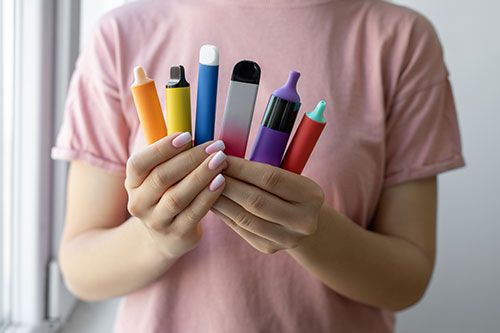
Adverse Effects
The prevalence of e-cigarettes and vaping in the United States has increased dramatically over the past several years. Due to the enormous degree of variation in devices, content, and recent growth, scientists are challenged to pinpoint the effects of e-cigarettes, but are discovering more concerning consequences daily. . What is already apparent though, is that the nicotine in e-cigarettes -and its subsequent addiction -are harmful, especially to children and young adults. The brain continues to develop until about the age of 25, so any use of nicotine during development can impair learning, memory, and attention, as well as lead to an increased risk of future addiction. In order to combat this, we have already seen strict regulation changes, especially in relation to the Juul, to prevent the sale and use of flavored pods in order to discourage children and young adults from using these devices.
While non-tobacco e-cigarettes and vape devices have been marketed as “healthy alternatives to cigarettes”, this is not necessarily true. The aerosol generated from e-cigarettes may contain compounds that contribute to cancer development and ultrafine particles that can penetrate the lungs and lead to systemic disease. The aerosol may also contain heavy metals and volatile organic compounds that can cause all sorts of health effects. E-cigarette and vaping associated lung disease, or EVALI, is a recently recognized complication of e-cigarette use.. EVALI is a very serious consequence that has resulted in the hospitalization of 96% of reported cases, with many fatalities. EVALI can be caused by a number of toxic particles from the aerosolization of e-cigarette liquid, degeneration of device components, thermal injury, and airway irritation and damage, or any combination of these factors. The initial treatment of EVALI is primarily supportive while healing occurs, the most important step is to stop the use of the e-cigarette. EVALI is not the only dangerous complication of e-cigarette use, however.
E-cigarettes and vapes contain many harmful substances that can be detrimental to your health. This includes but is not limited to:
- Nicotine - causes e-cigarettes and vapes to be addictive
- Propylene Glycol - commonly found in food, but also used in antifreeze and paint solvents among other common products
- Acrolein - an herbicide
- Carcinogens (cancer causing agents) like formaldehyde and acetaldehyde
- Diethylene Glycol - another chemical used in antifreeze
- Benzene - often found in car exhaust
- Endocrine disruptors - impacts fertility in both men and women
The importance of quitting smoking
There is no safe amount of smoking, and the best way to limit the impact of smoking is to quit. Quitting will improve your health regardless of your age or history of smoking. It is noted to increase your life expectancy by as much as 10 years while also reducing the risk of premature death. Quitting reduces the risk of some of the adverse effects of smoking including COPD, cardiovascular disease, reproductive disorders, and many different cancers including lung cancer. In addition, it can actually improve the condition of some people living with coronary artery disease and COPD.
The benefits of quitting start as soon as minutes after smoking your last cigarette. Within an hour, blood pressure and heart rate return to normal levels. Within the next day, your body has cleared the toxic carbon monoxide, increasing the amount of oxygen available in the body and the risk of a heart attack begins to decrease. The increased oxygen levels allow you to breathe easier allowing increased capacity for physical activity. Within the first month, the body is able to repair some of the nerve fibers in the mouth and nose, heightening their sense of smell and taste and lung function begins to improve. After 9 months, the lungs have done a significant amount of healing including repairing small projections called cilia that help propel mucus and fight infections. In just 1 year, the risk of coronary artery disease decreases by half and within the first 5 years the blood vessels have repaired enough to widen thereby reducing the risk of stroke.
The benefits of quitting are not restricted to health benefits alone. There are also clear financial and social benefits. The average smoker will save between $1,380 and $2,540 on packs of cigarettes annually depending on where they live and how much they are smoking. In addition to these savings, health care costs will decrease and health insurance premiums can decrease by as much as 25%. Socially, quitting will allow more freedom in where you can go without the stress of no-smoking rules and it will make spending time with non-smokers much less stressful as you will not have to excuse yourself periodically to smoke. Additionally, you will no longer be subjecting friends and family to secondhand smoke and its effects on their health.
Visual Timeline: Benefits of Quitting Smoking
How to start your quitting journey
To set your quitting journey up for success, it is important to come up with a plan that helps you succeed. When creating your plan, try using the START method:
Set a quit date: Setting a date establishes a timeline and prepares you
Tell your friends and family: Quitting is not an isolated journey, and having cheerleaders and champions can help you along the way!
Anticipate any challenges that may arise (i.e. nicotine withdrawal and cravings): Quitting can be hard, but every attempt is a step closer to success. Figuring out how to stay motivated, break the habits, and ask for help will help prepare you to overcome any obstacles you encounter.
Remove cigarettes and other tobacco products from your personal spaces like your home, car, or office: The old saying “out of sight, out of mind” holds some truth! Putting physical space between you and tobacco makes it harder to slide back into old habits.
Talk to your doctor to get help and resources that will make the journey easier: Your healthcare team is on your side! Resources are available for whatever challenge you may face, and support is only a call away. Checking in with your healthcare team regularly can help make sure you have all the resources you need, and continue to motivate you.
Once you have thought through your plan, it is important to be aware of the reasons that you smoke in addition to the reasons that you are quitting. For many people, smoking is used as a way to manage unpleasant feelings like depression and anxiety, stress, and loneliness. When you quit, it is important to consider healthier coping mechanisms. Exercise, breathing techniques, meditation, and other relaxation strategies have all been proven to help manage these symptoms.
In addition to the many different types of resources that are listed below, medications and therapy are great and important resources to help you in your quitting journey. Generally, there are two types of medications used for smoking cessation: nicotine replacement therapy which is often over-the-counter and non-nicotine medications. Nicotine replacement medications help reduce withdrawal symptoms and allow you to concentrate more on finding new coping skills and learning new behaviors. These medications come in many different forms like patches, lozenges, gum, nasal spray, and more. Non-nicotine medications are prescribed by your doctor and are helpful in reducing cravings and withdrawal symptoms without nicotine. Common medications that are prescribed are bupropion (Zyban) and varenicline (Chantix, Champix). If you think these may be beneficial to you, it is important to bring it up to your doctor.
Overcoming Obstacles
One of the biggest barriers to quitting for most people is the symptoms of nicotine withdrawal. These occur as your body gets used to living without the consumption of nicotine. These symptoms vary from person to person and can be relatively mild or overwhelming, but regardless it is important to understand that this withdrawal is not harmful to your body. The urges are often worse around the third day after quitting and gradually improve with time as your body adjusts. Some of the most common symptoms of nicotine withdrawal are:
- Urges to smoke: It is incredibly important to learn how to manage these cravings in order to be successful in quitting. These cravings can be brought on by certain triggers and behaviors that you once associated with smoking like a certain person that you used to smoke with, a location that you often went to smoke, or activities that you often did while smoking and therefore it is important to recognize and avoid these things in order to prevent cravings. While this helps, it will not get rid of the cravings but there are other resources that can help like smoking cessation medications.
- Feelings of irritation: The best way to manage these feelings is to stay focused on the reason you are quitting and ensure that you are doing what you can to take care of your mental health.
- Difficulty Concentrating: Be kind to yourself and try to avoid situations requiring large amounts of focus when possible during the first few days.
- Feelings of restlessness: Getting up and walking around or doing some form of physical activity can really help with these feelings. It can also be beneficial to avoid caffeinated beverages like coffee and tea at least initially.
- Difficulty sleeping: While this, like the other symptoms, does improve over time, it is important to address this with your provider if it begins to affect your day to day life. Some helpful tips are to avoid caffeine especially in the afternoon and evening, remove any nicotine patches at least an hour before bedtime, and try to avoid screens, alcohol, and heavy meals close to going to sleep.
- Gaining weight: This can be a very frustrating symptom of quitting. This can occur for a number of reasons including increased appetite, decreased ability to burn calories, and overeating due to the stress of quitting. Some tips to help manage your weight are to find some low calorie snacks that you enjoy to occupy your hands and mouth like carrots or celery, to ensure that you are doing some physical activity, and making sure that you are focusing on eating while you eat instead of having it as a background activity.
- Anxiety and depression: While more common in those with a history of anxiety and depression, it is important to be aware that changes to mental health can happen. If you experience increased anxiety or depression, it is very important to seek help either from your healthcare provider, the quitline (1-800-QUIT-NOW), or in severe cases emergency help.
Resources for Quitting
Quitting can be challenging, but you are not alone in this journey. In addition to medication and smoking cessation counseling groups, some may find other resources helpful in their journeys. 1-800-QUIT-NOW is a free resource that can help and is available in multiple languages including Spanish (1-855-DÉJELO-YA). You can also text “QUIT” to 47848 to get daily text message support from the National Cancer Institute’s smokefree.gov program! In this section, we have compiled a list of helpful resources to help you in your quitting journey. While these are very helpful, they are best used in conjunction with drug therapy either nicotine replacement therapy or non-nicotine medications. The current evidence as shown by the Cleveland clinic does not support the efficacy of these resources without additional help.
Apps
|
Uses information from the WHO to guide the quitting process and explains how your health improves with each day that goes by without smoking and connects people sharing the same experience. |

|
|
Attempts to make quitting more fun by incorporating games and motivational messages. They have many features on the app including tools to deal with cravings, keep track of your progress, breathing exercises, and managing nicotine substitutes. |
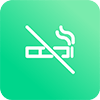
|
|
Clickotine - Google Play Store | Apple App Store Creates a personalized plan to help people achieve their goal of smoking cessation. It has many features including tracking your triggers, helping manage cravings as they arise, one-on-one texting support with a trained professional and more. While it is a subscription service, it can be covered by insurance and they make it easy to check your eligibility on their website. |
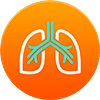
|
|
Sets new tasks and missions each day to help motivate people to abstain from smoking. Tracks money saved, how your health is improving, and helps manage cravings. |

|
|
Created by the WHO to help people identify triggers, manage cravings, set goals, and keep them focused on quitting. |

|
Websites
- CDC: Tips From Former Smokers - A compilation of resources and tips to help patients through the process of quitting
- Create My Quit Plan - Creates a personalized plan based on your goals through a list of questions
- Reasons to Quit Smoking
- Smokefree.gov - Has a variety of resources and information for all stages in the quitting journey
Videos
- The CDC Website for smoking cessation has a variety of videos from real people who quit smoking detailing their journeys with smoking and quitting - Videos | Campaign Resources | Tips From Former Smokers | CDC
- Dr. Judson Brewer discusses ways to break habits like smoking through mindful behavior in this TED talk - A simple way to break a bad habit | Judson Brewer
- Dr. Mike Evans discusses the different parts of quitting to prepare people for the journey ahead and provide helpful guidance - Quitting Smoking is a Journey
- Documentary from Frontline that discusses the smoking industry and their battle with the FDA and how this industry has impacted people - The Nicotine War (full documentary) | FRONTLINE
Books
- The Smoking Cure: How To Quit Smoking Without Feeling Like Sh*t
- Easy way to quit smoking by Allen Carr
Podcasts
- Quit Smoking With Me: A 30-Day Interactive Podcast - No one needs to go through quitting alone, this allows people to have a buddy while quitting on their own time. Includes prepisodes to help people prepare for quitting and 30 days of episodes to get them through the first month.
- Quit Smoking Now Podcast with Dr. Daniel Seidman - An expert on smoking cessation, Dr. Seidman created a 7 part podcast to help smokers through the journey of quitting.
Scholarly Articles
| Global Effects of Smoking, of Quitting, and of Taxing Tobacco Prabhat Jha, M.D., D. Phil., and Richard Peto, F.R.S. |
| Vaping-Related Acute Parenchymal Lung Injury - A Systematic Review Andrea M. Jonas, MD, Rishi Raj, MD |
| Interventions for Tobacco Smoking Cessation in Adults, Including Pregnant Persons US Preventive Services Task Force Recommendation Statement |
| A Comparative Study on Tobacco Cessation Methods: A Quantitative Systematic Review Gholamreza Heydari et al. |
| The current state of tobacco cessation treatment Humberto K. Choi, MD, FCCP, Jorge Ataucuri-Vargas, MD, Charlie Lin, MD and Amanda Singrey, PharmD, BCACP, CTTS |
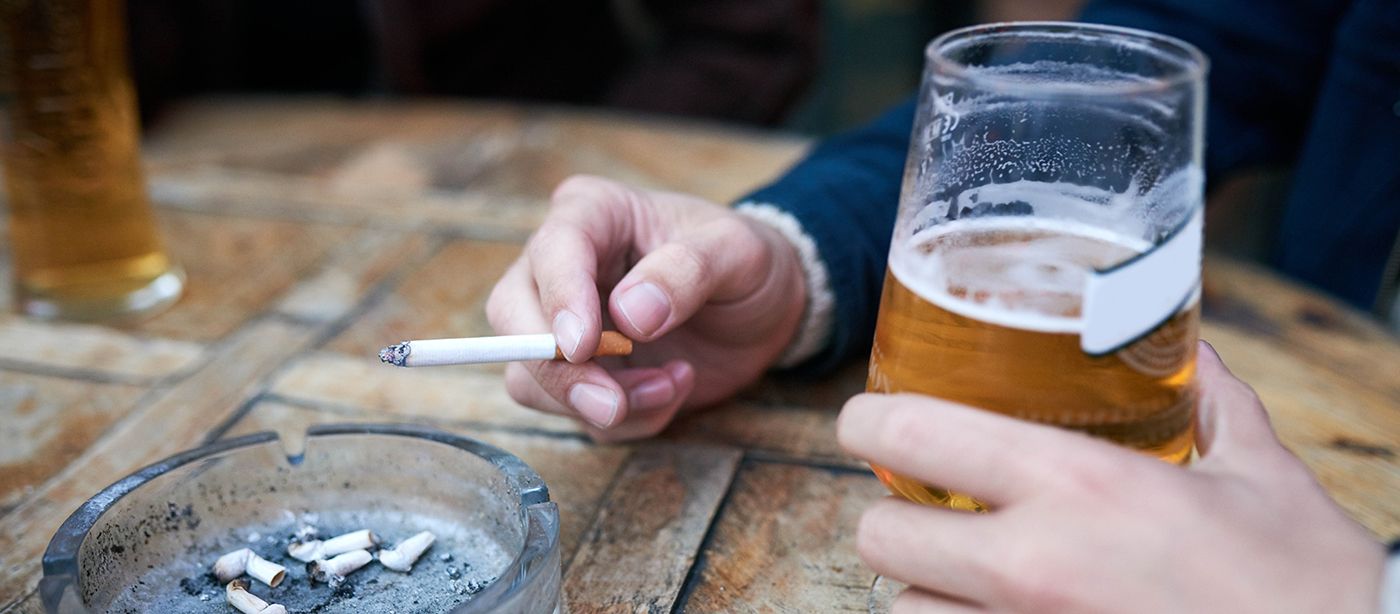
Alcohol Use
While drinking is very much a part of our culture in the US, it is important to know that drinking in excess can have a wide variety of harmful effects on your health. Because it is so normalized in our society, many people don’t even realize that they are drinking in excess, making it that much more important to bring awareness to its effects. Between the years of 2015-2019, over 140,000 people lost their lives each year due to excessive drinking and it was the cause of 1 in every 5 deaths of people from age 20-49.
What is a safe amount to drink per week?
It is important to note that there is no harmless amount of alcohol. It was noted by the WHO that any amount of alcohol consumption is associated with adverse health effects.
“We cannot talk about a so-called safe level of alcohol use. It doesn’t matter how much you drink – the risk to the drinker’s health starts from the first drop of any alcoholic beverage. The only thing that we can say for sure is that the more you drink, the more harmful it is – or, in other words, the less you drink, the safer it is.”
– Dr. Carina Ferreira-Borges, acting Unit Lead for Noncommunicable Disease Management and Regional Advisor for Alcohol and Illicit Drugs in the WHO Regional Office for Europe.
If you do choose to consume alcohol it is important to quantify how much you are drinking and that means knowing what is considered a “standard” drink.. The typical way to quantify drinking is by counting the number of standard drinks that are consumed per day or per week.. A standard drink is defined as:
- 12 ounces of beer
- 5 ounces of wine
- 8 ounces of malt liquor
- 1.5 ounces of distilled spirits or liquor
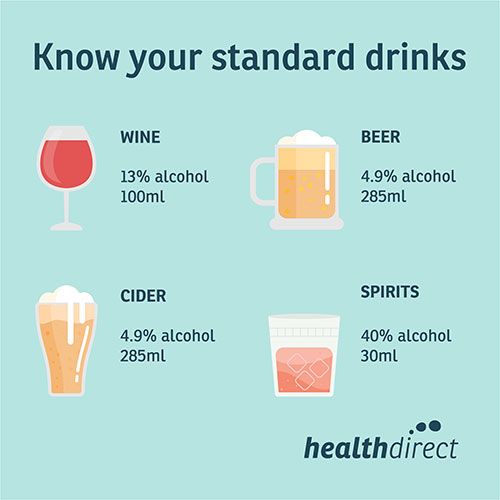
Using this quantification of a standard drink, drinking in moderation is defined as 1 drink or less per day for women and 2 drinks or less per day for men according to the 2020-2025 Dietary Guidelines for Americans. Over age 65 both women and men should limit their consumption to one drink per day or less.
Excessive drinking can be defined in one of two ways:
- Heavy drinking: 2 or more drinks per day for women and 3 or more drinks per day for men.
- Binge drinking: 4 or more drinks on a single occasion for women and 5 or more drinks on a single occasion for men.
Do I have a problem?
As mentioned above, many people who drink in excess and are harmed by the alcohol do not have alcohol use disorder (AUD), it is crucial that we are able to recognize the signs that indicate someone may be suffering from it. Many people who are living with AUD struggle to recognize that their drinking is out of control and causing them harm and distress. Traditionally, providers use a list of 11 criteria in which the person answers yes to 2 or more of the following in order to diagnose AUD.
From the NIH website: “Alcohol use disorder (AUD) is a medical condition that doctors diagnose when a patient’s drinking causes distress or harm. The condition can range from mild to severe and is diagnosed when a patient answers “yes” to two or more of the following questions:”
- Had times when you ended up drinking more, or longer than you intended?
- More than once wanted to cut down or stop drinking, or tried to, but couldn’t?
- Spent a lot of time drinking? Or being sick or getting over the aftereffects?
- Experienced craving—a strong need, or urge, to drink?
- Found that drinking—or being sick from drinking—often interfered with taking care of your home or family? Or caused job troubles? Or school problems?
- Continued to drink even though it was causing trouble with your family or friends?
- Given up or cut back on activities that were important or interesting to you, or gave you pleasure, in order to drink?
- More than once gotten into situations while or after drinking that increased your chances of getting hurt (such as driving, swimming, using machinery, walking in a dangerous area, or having unsafe sex)?
- Continued to drink even though it was making you feel depressed or anxious or adding to another health problem? Or after having had a memory blackout?
- Had to drink much more than you once did to get the effect you want? Or found that your usual number of drinks had much less effect than before?
- Found that when the effects of alcohol were wearing off, you had withdrawal symptoms, such as trouble sleeping, shakiness, irritability, anxiety, depression, restlessness, nausea, or sweating? Or sensed things that were not there?”
If you find yourself answering yes to any of the questions, it is important that you talk to your healthcare provider who can provide a formal evaluation for AUD and get you the help you need to overcome it.
Treatment for Alcohol Problems: Finding and Getting Help (PDF Download)
Adverse Effects of Drinking
Immediate Risks
- Injuries including car accidents
- Alcohol poisoning
- Violence including homicide, domestic violence, and sexual assault
- Fetal alcohol syndrome, miscarriage, and stillbirth in people who are pregnant
- Risky sexual behavior
Long-Term Risks
- Cardiovascular disorders such as hypertension and stroke
- Gastrointestinal disorders that can lead to major damage of the liver and pancreas
- Weakened immune system increasing susceptibility to illness
- Neurologic disorders such as decreased memory and cognition
- Psychiatric disorders including depression and anxiety
- Social problems like unemployment and unstable relationships
- Cancer of many different types including breast, throat, esophagus, liver, colon, and rectum
- Alterations in the gut microbiome leading to bacterial overgrowth and decreased good bacteria/increased bad bacteria
Who MUST avoid alcohol consumption? [EXTREMELY HIGH RISK]
- Pregnant or trying to become pregnant
- Pre-existing liver or pancreatic disease
- History of heart failure
- Currently taking medications either prescription or over the counter that interact with alcohol
- Family history of alcoholism
Benefits of Reducing or Cutting Out Alcohol
There are no health benefits from consuming alcohol. . Some of the benefits of refraining from drinking include:
- The immune system improves after quitting leading to fewer illnesses
- Cardiovascular system becomes healthier
- Risk of certain types of cancers decreases
- Mental health can improve drastically as sleep, attention, focus, and stress levels improve
- Relationships with friends and family often improves after quitting
The Benefits of Giving up Alcohol for a Month
Alcohol Withdrawal
One of the most important distinctions between quitting drinking versus quitting smoking, is that the withdrawal experienced can be dangerous and harmful when you stop consuming alcohol. Withdrawal symptoms typically arise between 12-24 hours after your last drink and resolve in approximately 48-72 hours, but in serious cases withdrawal symptoms can lead to delirium tremens (DTs) which produces more dangerous symptoms and lasts longer than normal withdrawal symptoms. Symptoms of DTs can include hallucinations, seizures, and significant increases in both heart rate and blood pressure. Because of the seriousness of the symptoms, it is important that people experiencing DTs seek treatment from a medical professional.
SAMHSA (Substance Abuse and Mental Health Services Administration) National Helpline
Confidential free help, from public health agencies, to find substance use treatment and information.
1-800-662-4357
How to Reduce or Stop Drinking
Once you have decided that you want to explore cutting down on alcohol, it can be hard to actually achieve that goal. It is important to start by evaluating your relationship with alcohol and think about why you drink, how often you are drinking, and how drinking makes you feel. You can start by making a list of reasons as to why you want to stop or reduce your drinking. This list is something you can come back to whenever you are struggling to refrain from drinking. Next, you can set a goal for yourself like how often you want to drink or how many drinks you want to have a week. Tell people in your life about your goal so that you have a support system and people to hold you accountable. Once you start to pursue your goal, you can keep a drinking diary so that you can see your progress and whether or not you are following the goals you set for yourself. It can also be helpful to remove all alcohol from your home so even if the temptation to drink arises, you won’t be able to do so without going somewhere.
One of the most challenging aspects to cutting out alcohol is the social pressure. Be prepared to have people ask you why you aren’t drinking and practice saying “no thank you” when you are inevitably offered a drink. During the first few weeks and months it may be helpful to avoid situations that you associate with alcohol whenever possible and try doing new activities that can occupy you.
While the resources below will help you achieve your goal and give you the tools you need to be successful, it can always be helpful to talk to your provider to see what tools they think are best for you. There are medications that they can prescribe to help if you have found that other tactics are not working for you. Common drugs prescribed by providers are:
- Naltrexone: This drug works by blocking the opioid receptors that alcohol binds to preventing the release of dopamine. This decreases the rewarding effects of alcohol making it less enjoyable and reducing cravings.
- Acamprosate: The exact mechanism of this drug is unknown, but it has been proven to help with alcohol withdrawal and reduces cravings.
- Disulfiram: This drug prevents the body from breaking down alcohol causing an unpleasant reaction to alcohol. This prevents people from consuming alcohol as they do not want to experience the adverse effects of this interaction.
Resources for Reducing or Cutting Out Alcohol
Helplines
- SAMHSA (Substance Abuse and Mental Health Services Administration) Helpline is a free service to provide referrals and information and is open 24/7 for those in need.
- Alcohol.org offers a hotline to help you understand your options for treatment and check your insurance coverage for different programs
Programs
- Alcoholics Anonymous
- SAMHSA Treatment Finder
- Substance Use Disorder Services in District of Columbia
Websites
- How to Stop Drinking: Making a Plan That Works for You
- 12 ways to curb your drinking - Harvard Health
- Alcohol Abuse Hotline Guide - information about the hotline, treatment options, treatment centers, and insurance coverage
Apps
|
An evidence-based alcohol reduction program that uses neuroscience to help you cutback on your drinking. It contains in-depth courses on a variety of topics to help you overcome drinking and a 24/7 private community that allows you to connect with other like minded people, especially by joining specialized community groups. (in-app purchases required) |

|
|
Sober Grid Connects people who are trying to become sober to people who have already gone through their journey to sobriety. It allows people to connect instantly through their “Burning Desire” feature, in addition to a newsfeed where people can post thoughts, challenges, and encouragement to other members. One other feature of the app is connecting people who are in the same area to allow you to find friends with a similar mindset. |

|
|
Sobriety Counter Allows you to gamify sobriety. You can set personalized targets, see how much money you are saving, and play in app games that help you manage cravings. It will also show you how your body is improving and recovering. |

|
|
A great, free app with many features to help you reach your goal of sobriety. It tracks the amount of time you’ve been sober, provides daily encouragement, creates personalized goals and reminds you about milestones, shows you other people who are on the journey and allows you to communicate with them. Additionally, you can set pledges for yourself to build healthier habits and gives you a space to reflect on your days with a nightly journaling activity. |

|
|
Created by a Licensed Alcohol and Drug Counselor, this app helps you deal with cravings in real time, catering to your specific situation. |
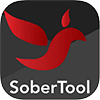
|
Podcasts
|
The Bubble Hour Hosted by Jean McCarthy who is in recovery herself. She shares her story as well as others to spread hope and help people on their journey to recovery. |
|
That Sober Guy Podcast Shane discusses sobriety with the mission to help men stay alcohol free. He covers topics like how to stay sober at events and on holidays, shares stories of people who have achieved sobriety, and provides motivation to stay sober. |
|
A Sober Girls Guide More than just a podcast, A Sober Girls Guide helps women own their sobriety by providing tools and having honest conversations surrounding mental health, wellness, and spirituality. |
|
Recovery Happy Hour Tricia aims to show people that sobriety does not mean that you are missing out and life may even get better after quitting. She talks to other sober people to encourage you in your journey to an alcohol free life. |
|
Sober Curious Whether you are committed to sobriety or you are debating cutting down on the booze, this podcast is for you. Ruby talks to people about their relationship with alcohol and discusses how to navigate a world that seemingly loves to drink. |
|
Sober Awkward Vic and Hamish were once the life of the party when it came to alcohol consumption, but have since found happiness in their sobriety. The two share stories of their pasts and how they have come to love life without alcohol. |
|
Take a Break from Drinking A great resource to encourage you and give you the tools to say no to drinking. This podcast doesn’t necessarily tell you to completely cut out drinking, but allows you to delve deeper into your relationship with alcohol and help you cut down on your drinking. |
Books
There are a lot of amazing books that discuss people’s experiences with alcohol and sobriety. The books below are not an extensive list of the many amazing books that exist, but some that we have found in our research that may be a great jumping off point for you to learn more about your relationship with alcohol.
- Drinking: A Love Story by Caroline Knapp
- The Recovery: Intoxication and its Aftermath by Leslie Jamison
- The Sober Diaries by Clare Pooley
- The Unexpected Joy of Being Sober: Discovering a happy, healthy, wealthy alcohol-free life by Catherine Grey
- Blackout: Remembering the Things I Drank to Forget by Sarah Hepola
- This Naked Mind by Annie Grace
- Dry: A Memoir by Augusten Burroughs
- The Girl on the Train by Paula Hawkins
Scholarly Articles
- How the risk of liver cancer changes after alcohol cessation: A review and meta-analysis of the current literature
Gawain A Heckley et al.
Videos
| Alcohol Addiction: How To Detox & Begin Recovery | Stanford |
|
NO MORE ALCOHOL - One of the Most Eye Opening Motivational Videos Ever Dr. Andrew Huberman, Patrick Bet David, Professor David Nutt, and Mario Aguilar explain why you should stop drinking alcohol. |
| What Alcohol Does to Your Body, Brain and Health | Dr. Andrew Huberman |
